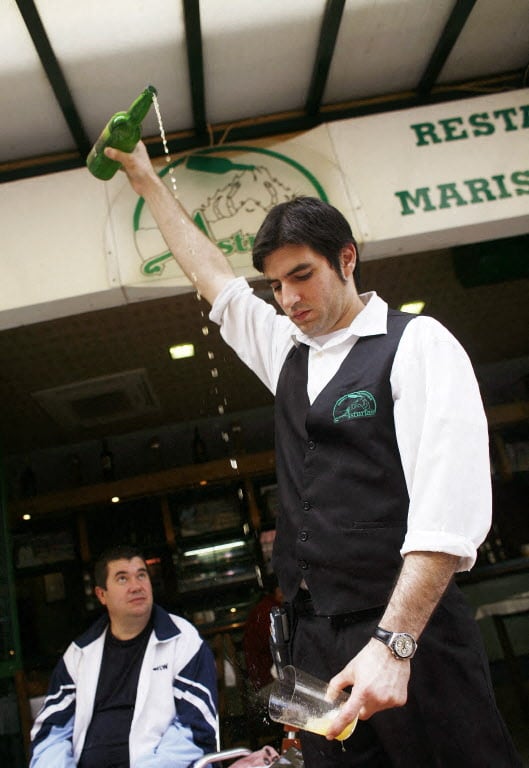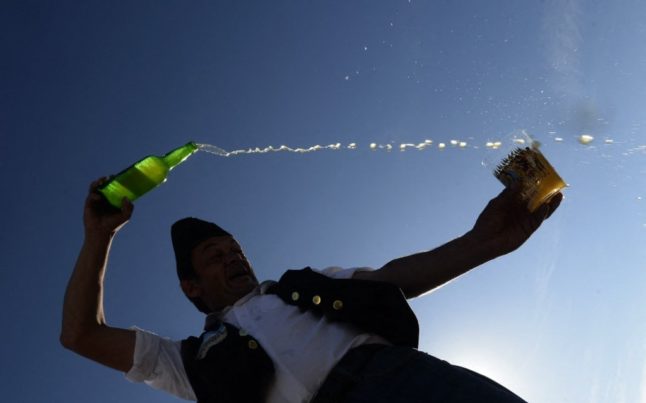They say Asturian blood is 50 percent water and 50 percent cider, and given the 40 million bottles produced every year in the region, it doesn’t seem too hard to believe.
However, it’s the method of serving cider in Asturias which really captures the imagination.
The bottle will either come attached to a contraption which sucks up the cider and splurts it into a wide but thin-rimmed glass.
Or the waiter will come out every few minutes to grab your bottle and glass, lift the former high up with one arm and the latter down low around waist height before pouring some of the cider into the glass from at an arm’s length.
There’s even a verb for this action – escanciar – to decant.
The objective is for the cider to be shaken and aerated so that its natural carbon dioxide ‘awakens’.
When it is poured from above and hits the glass, carbon dioxide bubbles are produced that make the aroma of the cider come alive.

These bubbles go away quickly so once served, the customer should quickly drink the culín (small bottom) up in one swig.
The action of escanciar imitates how cider would be traditionally served when it went directly from big oak barrels to the glass, as cider has been the drink of choice in Asturians since before Roman times.
READ ALSO: Why Spaniards’ habit of drinking alcohol every day is surprisingly healthy
This is after all natural cider which doesn’t come with the sugar, additives and pre-carbonated mixes of brands such as Strongbow, Magners or Kopparberg.
“It took me some time to get the hang of pouring cider, I missed the mark a lot, and my arm used to get very tired at first,” a Latin American waitress at a bar in Gijón told The Local Spain.
Many sidrerías (cider houses) and restaurants have cylindrical tubes on wheels where escanciadores (the waiters in charge of pouring cider) can put the glass in to avoid making a mess on the floor or splashing customers, as there is always some splatter even if they don’t completely miss the mark.

The more old-school chigres (cider house in Asturian) prefer to have sawdust all over the floor to absorb the spilt cider.
To pour, tirar (throw) or escanciar (decant) cider like an Asturian, you should tilt the bottle slowly from above and aim for the cider to hit the top part of the inside side of the glass, which has to be held at a 45-degree angle. It’s this that brings out the effervescence out in la sidra natural.
So when you visit the beautiful region of Asturias and you tuck into their famously ample servings of fabada asturiana (Asturian bean stew) or cachopo (meat, cheese and ham all together in breadcrumbs), washed down with one or two bottles of sidra, now you’ll understand what’s behind this eye-catching tradition.
READ ALSO: Eight fascinating facts about Spain’s Asturias region




 Please whitelist us to continue reading.
Please whitelist us to continue reading.
Member comments